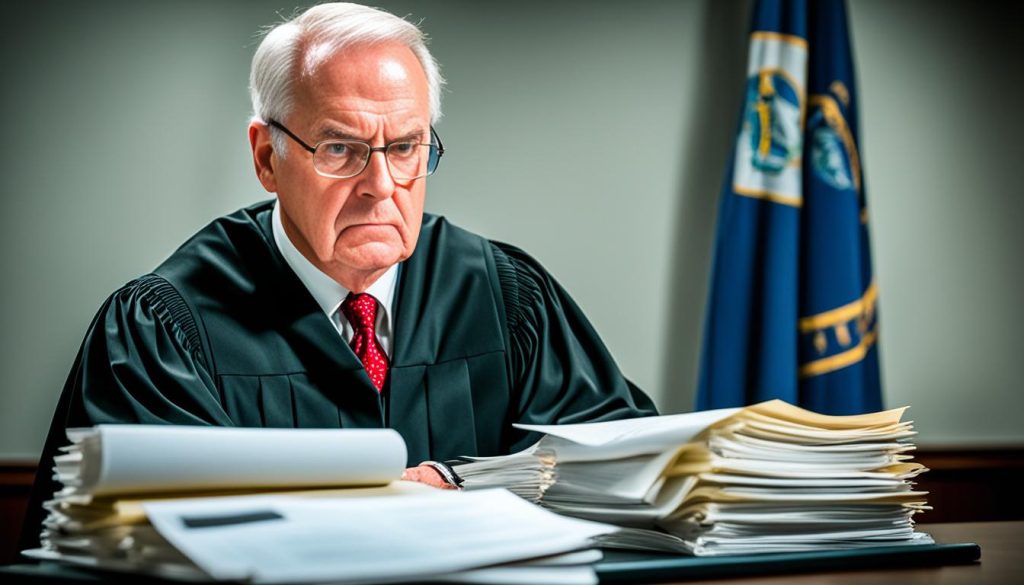Are you a tenant or a landlord navigating the complex world of commercial leases? Look no further! The Tenant and Landlord Act 1954 is here to protect your rights and provide clarity in any lease agreement. In this blog post, we will explore the ins and outs of this crucial piece of legislation, helping you understand your rights and obligations under the law. Stay tuned for expert insights, practical tips, and everything you need to know about the Tenant and Landlord Act 1954
Introduction to the Tenant and Landlord Act 1954
The Tenant and Landlord Act 1954 was introduced to govern the rights and obligations of landlords and tenants of business premises in the United Kingdom. This landmark legislation confers “security of tenure” to tenants, granting them the right to remain in occupation at the end of the contractual term of a lease and the right to apply to court for the grant of a new lease.
Purpose and Scope of the Act
The primary purpose of the Landlord and Tenant Act 1954 is to provide a legal framework that balances the interests of landlords and tenants of commercial properties. The Act aims to offer tenants a degree of stability and continuity, while also recognising the legitimate needs of landlords to regain possession of their properties under certain circumstances.
Application to Business Premises
The Landlord and Tenant Act 1954 applies to business tenancies, meaning that it covers more or less anyone who lawfully occupies premises under a lease for the purposes of their business. This includes a wide range of commercial activities, from retail and office spaces to industrial and agricultural premises. However, the Act does not apply in certain situations, such as when the parties have “contracted out” of the Act, or in the case of licences, tenancies at will, and short-term leases.
Understanding the intricacies of the Landlord and Tenant Act 1954, including its case law, the 1954 Act agreement for lease, and the concept of holding over under the Landlord and Tenant Act 1954, is crucial for both landlords and tenants navigating the commercial property landscape in the UK.
Security of Tenure and Lease Renewal Rights
The Tenant and Landlord Act 1954 confers two key elements of security of tenure to business tenants. Firstly, it provides for the statutory continuation of the tenancy, where the lease continues on largely the same terms until it is either renewed or terminated in accordance with the Act’s provisions. Secondly, the Act grants tenants the right to apply to the court for a new lease if the landlord and tenant are unable to agree on the terms of renewal.
Statutory Continuation of Tenancy
Under the Act, a business tenancy will automatically continue beyond the contractual term, provided the tenant remains in occupation. This statutory continuation allows the tenant to maintain their protected tenancies and retain their right to apply for a new lease, rather than facing the potential loss of their premises at the end of the existing lease.
Right to Apply for a New Lease
If the landlord and tenant cannot agree on the terms for a new lease, the tenant has the right to apply to the court for the grant of a new tenancy. This right to renew the lease is subject to the landlord’s ability to oppose the renewal on certain specified grounds, such as the landlord’s intention to redevelop or occupy the premises themselves. However, if the landlord’s opposition is not based on the tenant’s non-compliance with the lease, the tenant may be entitled to statutory compensation upon leaving the premises.

Grounds for Regaining Possession
As a landlord, it is important to understand the limited grounds on which you can regain possession of your property from a tenant. The Landlord and Tenant Act 1954 outlines the specific circumstances in which a landlord can terminate a business tenancy and take back control of the premises.
Landlord’s Intention to Redevelop or Occupy
One of the most significant grounds for regaining possession is if the landlord requires the property for their own development or occupation. This could include plans to demolish the existing building and construct a new one, or to convert the premises for the landlord’s personal use. However, the landlord must demonstrate a genuine intention and ability to carry out these plans, and provide suitable alternative accommodation for the displaced tenant.
Tenant’s Non-Compliance with Lease Terms
Another valid reason for a landlord to regain possession is if the tenant has a history of failing to comply with the terms of the lease, such as non-payment of rent or disrepair of the property. The landlord must follow the correct procedures and serve the appropriate notices to terminate the tenancy on these grounds.
Higher Rent Potential for Undivided Premises
In some cases, a landlord may be able to regain possession if the property has been divided into multiple units through subletting, and the landlord can demonstrate that the entire premises would command a higher rent if let as a single unit. This ground for regaining possession is designed to prevent the diminution of the landlord’s interest in the property.
It is crucial for both landlords and tenants to understand their respective obligations and rights under the Landlord and Tenant Act 1954, as well as the specific grounds for regaining possession, diminution of the landlord’s interest, and the requirement to provide suitable alternative accommodation. Seeking professional legal advice is strongly recommended to navigate the complexities of this legislation and protect your interests.
Contracting Out of the Act
The contracting out provisions of the Landlord and Tenant Act 1954 allow for the security of tenure conferred by the Act to be excluded by agreement between the landlord and tenant. This is most commonly done in situations where the landlord intends to carry out a redevelopment project, the lease is for a very short term, or it involves an underletting of a part of a larger holding.
Requirements for Excluding Security of Tenure
To exclude the Act’s protection, the landlord must serve a formal notice on the tenant in a prescribed form. The tenant, in turn, must make a declaration in a prescribed form acknowledging their understanding of the effect of the lease being excluded from the protection of the Act. This formal process ensures that the tenant is fully aware of the consequences of contracting out and the loss of their security of tenure rights.
Careful attention must be paid to the specific contracting out provisions and requirements set out in the Act, as failure to comply with the technical details can render the exclusion process invalid, with serious implications for both the landlord and tenant. Professional legal advice is essential to navigate this process successfully and protect the interests of all parties involved.

Tenant and Landlord Act 1954 Notices
The most common notices bringing an existing, protected business tenancy to an end under the Landlord and Tenant Act 1954 are the Section 25 notice by the landlord, the Section 26 request by the tenant, and the Section 27 notice by the tenant. These notices must be in the form set out by the Act and follow specific timescales and requirements. Failure to comply with the technical requirements can render the notice invalid, with serious consequences.
Section 25 Notice by the Landlord
The landlord can serve a Section 25 notice on the tenant, proposing the terms of a new lease or opposing the renewal of the existing lease. This notice must comply with strict formalities, including the required timescale for service, the specified information it must contain, and the grounds upon which the landlord can oppose renewal under the landlord and tenant act 1954 grounds for possession.
Section 26 Request by the Tenant
In response to a landlord’s Section 25 notice, the tenant can serve a Section 26 request, outlining their proposals for the terms of a new lease. This initiates the statutory renewal process and requires the landlord to either agree to the tenant’s proposals or apply to the court for the determination of the new lease terms.
Section 27 Notice by the Tenant
Alternatively, the tenant can serve a Section 27 notice on the landlord, informing them of the tenant’s intention to vacate the premises at the end of the current lease term. This notice must also comply with specific formalities and timescales set out in the landlord and tenant act 1954 notices.

Renewal Process and Dispute Resolution
When a Section 25 notice or Section 26 request is served, either party has the right to apply to the court for the grant of a new tenancy to the tenant. However, they must comply with the required timescales outlined in the Landlord and Tenant Act 1954. The landlord can oppose the tenant’s application for a new lease if they can satisfy one of the specific grounds of opposition stipulated in the Act.
Opposed and Unopposed Renewals
If the parties cannot reach an agreement on the terms of a new lease, the court can step in to decide the length of the lease, the rent payable, and other key terms. Generally, the court will be more inclined to agree to the length of term requested by the tenant rather than the landlord, as the Act aims to protect tenants’ security of tenure.
Court Determination of Lease Terms
The court’s role in determining the terms of a new lease is crucial when the landlord and tenant cannot see eye-to-eye. The court will consider factors such as the rent review mechanisms, the interim rent payable during the renewal process, and other provisions that will govern the court determination of lease terms. This ensures a fair and balanced outcome for both parties.
Compensation for Tenants
If the landlord opposes the renewal of the lease for reasons other than the tenant’s non-compliance with the terms of the tenancy, the tenant becomes entitled to compensation upon vacating the premises. The amount of compensation is based on the rateable value of the property, providing the tenant with some financial security when their occupancy comes to an end.

Conclusion
The Tenant and Landlord Act 1954 is a vital piece of legislation that governs the rights and responsibilities of landlords and tenants of business premises across the United Kingdom. By providing tenants with security of tenure and the right to renew their leases, the Act seeks to strike a fair balance between the interests of both parties. However, the strict procedures and notice requirements outlined in the Act must be meticulously followed, and seeking professional legal advice is essential for both landlords and tenants to navigate the complexities and protect their respective positions.
The limited grounds on which landlords can regain possession of the property, as well as the potential for compensation to tenants in certain situations, underscore the importance of the Act in safeguarding the rights of business tenants. As the commercial property market continues to evolve, a thorough understanding of the Tenant and Landlord Act 1954 and its implications will remain crucial for all parties involved in commercial leasing agreements.
In conclusion, the Tenant and Landlord Act 1954 is a critical component of the legal framework governing commercial property in the UK, and its provisions must be taken into account by both landlords and tenants to ensure a fair and harmonious relationship, and to protect their respective interests.
FAQ
What are the key elements of “security of tenure” for business tenants?
The Act confers two key elements of “security of tenure” to business tenants: (i) the “statutory continuation” of the tenancy, where the tenancy continues on more or less the same terms until renewed or terminated in accordance with the Act, and (ii) the tenant’s right to apply to court for a new lease if the landlord and tenant cannot agree on the terms.
On what grounds can the landlord regain possession of the property?
The landlord can only regain possession of the property on certain specified grounds, the most important of which are: (i) where the landlord requires the property back either for development purposes or to occupy themselves, (ii) where the tenant has a history of non-payment of rent or non-compliance with the lease obligations, and (iii) where premises have been split up by subletting into a number of units and the whole premises would command a higher rent if let together under one lease.
How can the security of tenure be excluded?
The security of tenure conferred by the Act can be excluded by agreement between the landlord and tenant. This is most usually done where the landlord intends to carry out a redevelopment, the lease is for a very short term, or it is an underletting of a part of a larger holding. To exclude the Act, the landlord must serve a formal notice on the tenant in a prescribed form, and the tenant must make a declaration in a prescribed form outlining that they understand the effect of the lease being excluded from the protection of the Act.
How does the renewal process and dispute resolution work under the Act?
If a Section 25 notice or Section 26 request is served, either party has the right to apply to court for the grant of a new tenancy to the tenant, but must comply with the required timescales. The landlord can oppose the tenant’s application for a new lease if they can satisfy one of the specific grounds of opposition. If the parties cannot agree, the court can decide the terms of the new lease, the length of the lease, and the rent payable.






